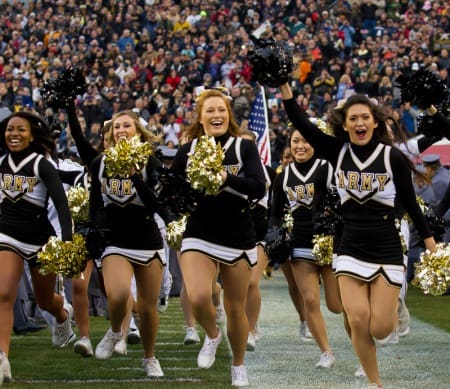Army Football, A Proposal to the USMA Superintendent, Part 2 of 6

George Lynn Cross, while University of Oklahoma President, is reported to have once told his state legislation that "we want to build a university of which the football team can be proud of." Lucky for us, USMA is one of the finest colleges in the land.
The following is the second of six parts that propose some approaches that could be taken to improve the competitiveness of Army football. Each can be implemented independently or together with all or some of the other approaches. Almost everything that can be done is within the decision making power of the USMA Superintendent.
Advertisement
This addresses the need to formalize a 53-month and 59-month program for USMA that complements and supports a competitive Army football team, other sports teams and other situations.
Background
I recently saw statistics that show that the average college student is now taking at least five years and sometimes six years to complete their four-year degree. Now one can argue with statistics and studies using them, but some of us with college-aged children can vouch that there is some truth to this.
Now many of the top-tier universities and colleges, such as the Ivies, Stanford, Notre Dame, Duke, Northwestern and Vanderbilt probably still have closer to 90% of their students finishing their degree in four years, just like at USMA and the other service academies. They all admit a larger percentage of top academic students than most colleges that field major college football teams.
Almost all major college football teams, except the service academies, redshirt many of their freshmen for several reasons - to allow for strength conditioning and physical maturity; to assist the incoming student in the transition to a more demanding academic environment; and to provide them time to learn their position. NCAA rules give athletics four years of eligibility over a five year period, with extensions granted for season-long injuries or medical problems. So for the most part, Army Football competes on an uneven playing field against teams with redshirted athletics.
This is a reverse of the situation that Army Football had prior to World War II. Army recruited many who had played one or more years on other football teams, under the argument that USMA really needed older and mature men to meet its mission. They could still play four years at Army, a situation that led to the suspension of the Navy game in 1928 and 1929 and a few teams refusing to play Army. In the late 1930s, Army came into compliance with NCAA rules on years of eligibility and playing of freshmen.
USMA has long maintained a four-year program along a 47-month cycle, with exceptions during the World Wars. Cadets who failed one or more courses were either expelled or turned back by the Academic Board each semester. The turned back cadet repeated his current class year - for example, if he was a sophomore (third class) and failed mathematics, he would start the next academic year with the new sophomore class and repeat that failed course.
Around 1970, the Academic Board started having summer schools to provide an opportunity for cadets to successfully pass the failed course and continue with their classmates. In the late 1970s, a few seniors (first class) were given the opportunity to finish coursework during the fall semester, after their classmates graduated in May or June, and graduate in December graduation with their class.
Several head football coaches have informally worked with the Academic Board to have several cadets take reduced academic loads during the fall semester, with the cadet making up the course load with a combination of summer school and/or December graduation. Also, a few football players who were significantly injured; took the next semester off to rehabilitate; and either took a combination of academic overload, summer school or an extra semester to graduate on time or late.
Proposal
Should the Army Football program institute a policy to Redshirt all freshmen. This policy might also be applied to cadets in other sports?
If so, the USMA Academic Board should formerly establish a 53-month and 59-month program for some cadets.
The redshirted freshman would participate in all football practices but would not play in any games during their first season. They would still retain their eligibility over the next four seasons. During freshman year, the redshirted football player would not take one or two courses during each semester (as defined by the 59-month program).
At the end of their plebe year, the Academic Board would meet to determine which program each cadet would now be in, with input from all parties involved (academic, tactical, athletic, cadet, etc.). Some top-tiered cadets might be returned to the 47-month program by either overloading a future semester or taking courses in summer school. Other cadets would be put into either the 53- or 59-month program.
To maintain the close bonds developed during new cadet training and plebe year, all cadets in the 53- and 59-month programs would stay with their original class - in their second academic year their would be members of the third class. Only starting the fifth year would cadets in the 59-month program be transferred to the next class, essentially having two first class years.
... Stay Tuned For Part III
** To chat with other Army fans about this article and more, please visit The 12th Knight message board.**